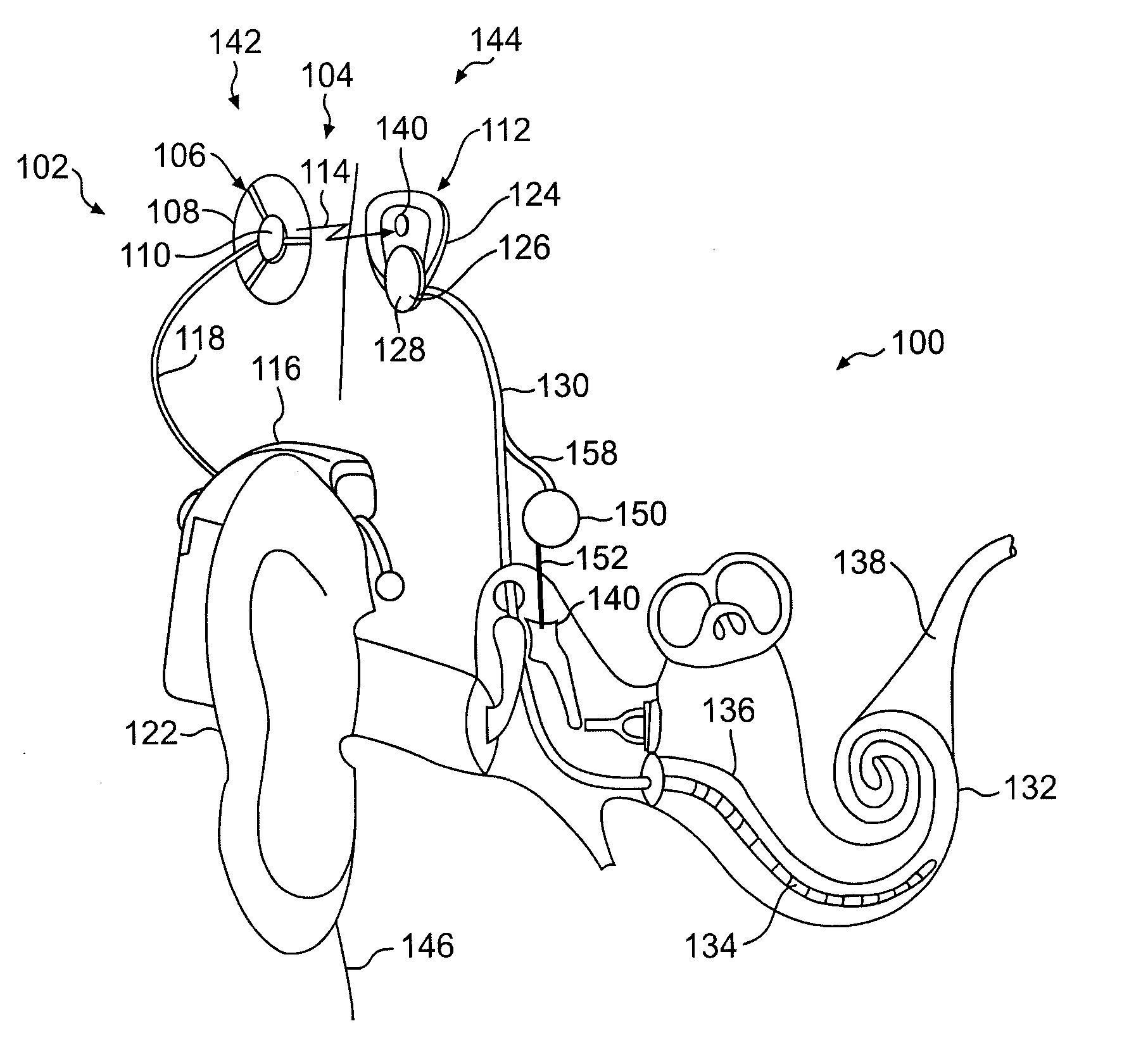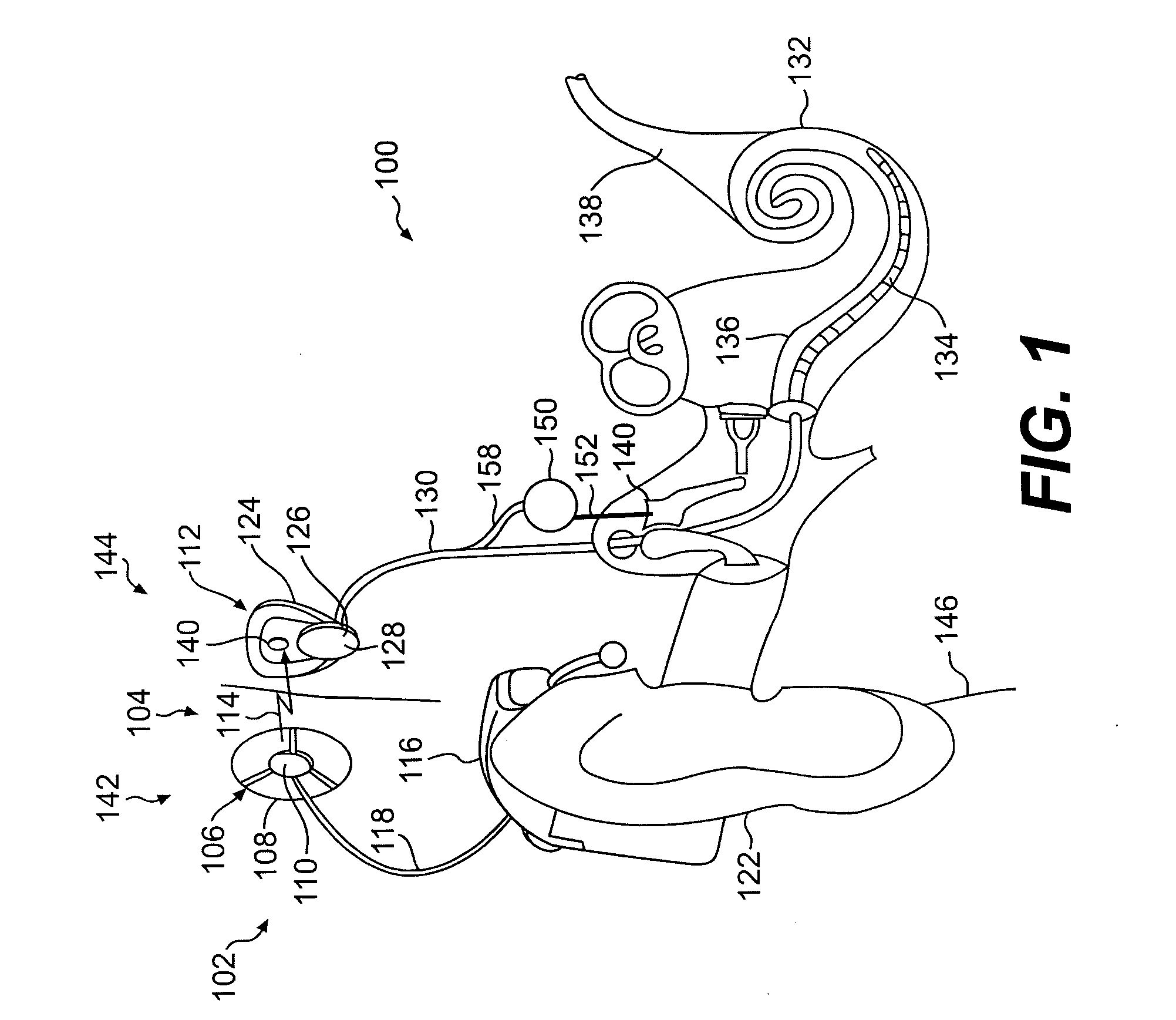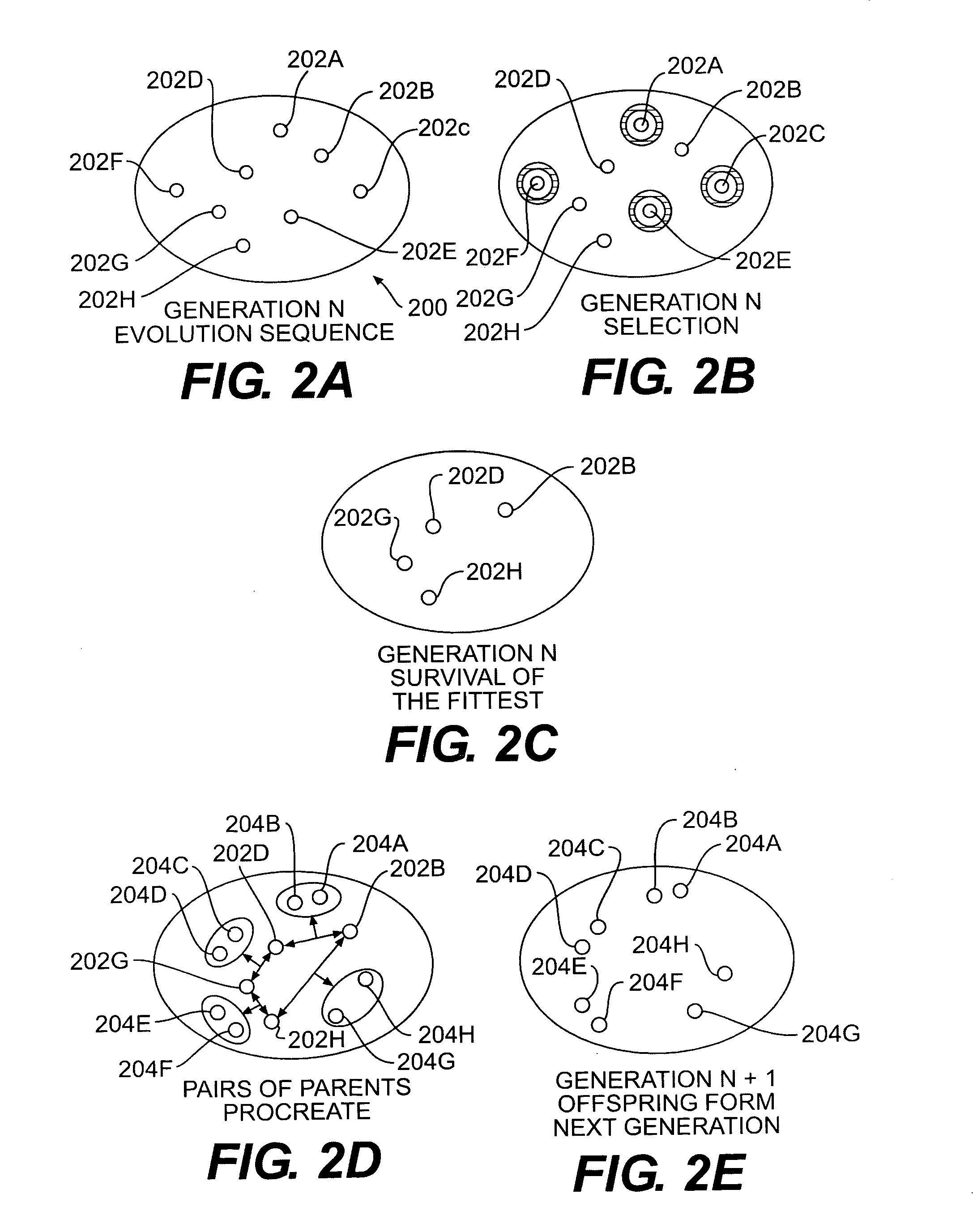Using a genetic algorithm to fit a cochlear implant system to a patient
a cochlear implant and genetic algorithm technology, applied in the field of cochlear implant systems, can solve the problems of not being able to experience all of the alternatives, not being able to identify the optimal parameter, and hearing loss
- Summary
- Abstract
- Description
- Claims
- Application Information
AI Technical Summary
Benefits of technology
Problems solved by technology
Method used
Image
Examples
Embodiment Construction
[0026] It is advantageous to define several terms before describing the invention. It should be appreciated that the following definitions are used throughout this application. Where the definition of terms departs from the commonly used meaning of the term, applicant intends to utilize the definitions provided below, unless specifically indicated.
[0027] For the purposes of the present invention, the term “a number of spectral maxima periodically chosen for representation” refers to an integer value which determines, at any moment, how many peaks in the audio spectrum should be represented by corresponding electrical pulses delivered to channels of a cochlear implant.
[0028] For the purposes of the present invention, the term “a mapping of sound pressure to stimulus current for each said respective channels” refers to the mathematical algorithm which determines an appropriate intensity for electrical stimulation as derived from the intensity of an audio signal.
[0029] For the purpo...
PUM
 Login to View More
Login to View More Abstract
Description
Claims
Application Information
 Login to View More
Login to View More - R&D
- Intellectual Property
- Life Sciences
- Materials
- Tech Scout
- Unparalleled Data Quality
- Higher Quality Content
- 60% Fewer Hallucinations
Browse by: Latest US Patents, China's latest patents, Technical Efficacy Thesaurus, Application Domain, Technology Topic, Popular Technical Reports.
© 2025 PatSnap. All rights reserved.Legal|Privacy policy|Modern Slavery Act Transparency Statement|Sitemap|About US| Contact US: help@patsnap.com



